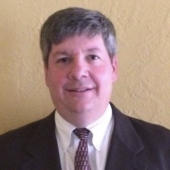I remember both the excitement and anxiety of Valentine’s Day at school, from kindergarten through high school. In elementary grades, watching my schoolmates loading the enormous heart-decorated box and wondering how many were for me. At the end of the day red, pink, and white envelopes were dropped on my desk, I wondered if I would get more or less than those seated around me – who were likely feeling the same thoughts. Or in high school, perseverating on the oh-so-important invitation to the Valentine’s Day dance. And what does that have to do with Black history?
What were we really celebrating? A metric of popularity? It seems rather shallow in our current times. How about this February celebrating love for humanity? Social justice, equality and Black history have become a vital student issue. While we distance-learned, the names George Floyd, Breonna Taylor, and Ahmaud Arbery entered our students’ world. And it awakened social justice not just for students of color but for all students. February is a perfect time to get them engaged in Black History project based learning by allowing them to do social justice and equality projects that actually can have an impact on their world – for the love of humanity!
These types of projects help our students deal critically and logically with complex and subjective information. They build their ability to weigh the evidence and ponder questions from multiple sides. They summon reasoning about being human and learning to ask questions that can be life, community, or world-changing. They help us live together more peaceably and lovingly…real hearts, not paper!
Consider these options in creating racial justice, equality and Black history project based learning:
Encourage students to include aspects that heighten their interests:
How does Amanda Goran’s Inaugural Poem “The Hill We Climb” apply to our school?
How do rap songs address racial justice, and how do they impact it?
Is there a difference in perception and/or experience of equality in our school?
What are the barriers to racial equality in our school, community, and nation?
Statistics about social justice: are they biased?
Help them identify resources and mentors who have knowledge or experience of their projects:
Resources for Mentors Around Race, Inclusion, & Cultural Respect | MENTOR
Mentoring & Social Justice – Seedling
Your Local University and Community Organizations
Find projects that are already being done in other parts of the globe, and apply them locally.
So, this year, never mind the paper hearts. Help your students understand what might be making or breaking the real ones.











